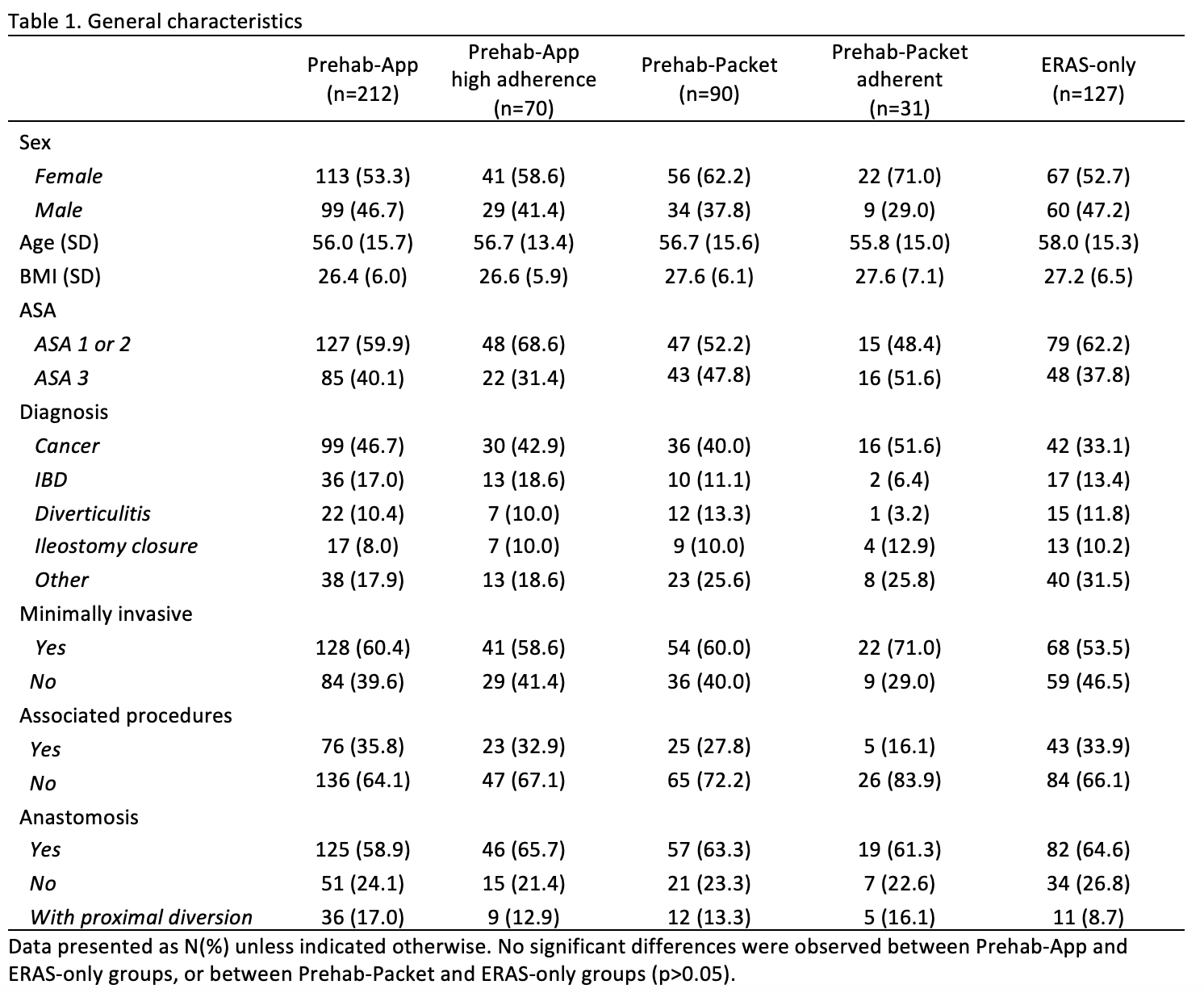RESULTS AND LESSONS LEARNED FROM TWO HOME-BASED PREHABILITATION PROGRAMS
Cintia Mayumi S. Kimura*, Serena Bidwell, Megan Cvitanovic, Margaret Folk-Tolbert, Allison Kramer, Kreeti Shankar, Elizabeth Shelton, Andrew Shelton, Cindy Kin
Stanford Medicine, Stanford, CA
Surgical prehabilitation aims to improve postoperative recovery by optimizing patients' fitness. Physical exercise and nutrition are important components, but they rely on one's willingness and ability to change habits, a challenge for home-based prehabilitation. Here, we describe our experience with two home-based prehabilitation programs and their effect on surgical outcomes.
Methods: Consecutive patients undergoing abdominal colorectal surgery in 21 days or more were invited to participate. The first cohort (Prehab-App) received access to a mobile application and a pedometer. Patients set goals for strength exercise intensity and step count and received information about the Mediterranean diet. They were asked to log their activity and diet in the app. Degree of adherence was divided into low (0-10%), moderate (11-33%), and high (38-100%), according to the fraction of days patients achieved their goals. The second cohort (Prehab-Packet) received an informational folder about strength and cardio exercises and the Mediterranean diet. Participants received a 3-week subscription to a produce delivery service. They were asked to log their physical activity and diet habits on a paper log and returned it when they presented for their operations. Adherence was defined as a difference of 2 or more points between surveys, or achievement of the exercise goals. We compared both prehab cohorts to a third cohort (ERAS-only) consisting of patients who underwent colorectal surgery and used a mobile application that only had information about the ERAS pathway. All three groups followed the ERAS clinical pathway. Complications were classified with the Comprehensive Complication Index (CCI). Logistic and linear regression were used for binary and continuous outcomes, respectively.
Results: No demographic or operative differences were observed across the groups. In the Prehab-App group (n=212), 26 (12%) patients had moderate adherence and 70 (33%), high. In the Prehab-Packet group (n=90), 58 (65%) patients completed the second survey, and only 14 logs were returned. Overall, 31 (34%) patients were adherent: 3 to both diet and exercise, 9 to exercise only, and 19 to diet only. Complications among adherent patients in the prehab groups did not differ from the ERAS-only group (Table 2), but there was a trend towards shorter length of stay among patients adherent to prehabilitation.
Conclusion: Adherence tended to be higher in the web-based prehabilitation program than the paper-based one. The app interface and the pedometer may have facilitated compliance. No significant effect on complications was observed, but patients who adhered to prehabilitation tended to have shorter length of stay.
Table 1. General characteristics
Table 2. Surgical outcomes in the three cohorts
Back to 2022 Abstracts
